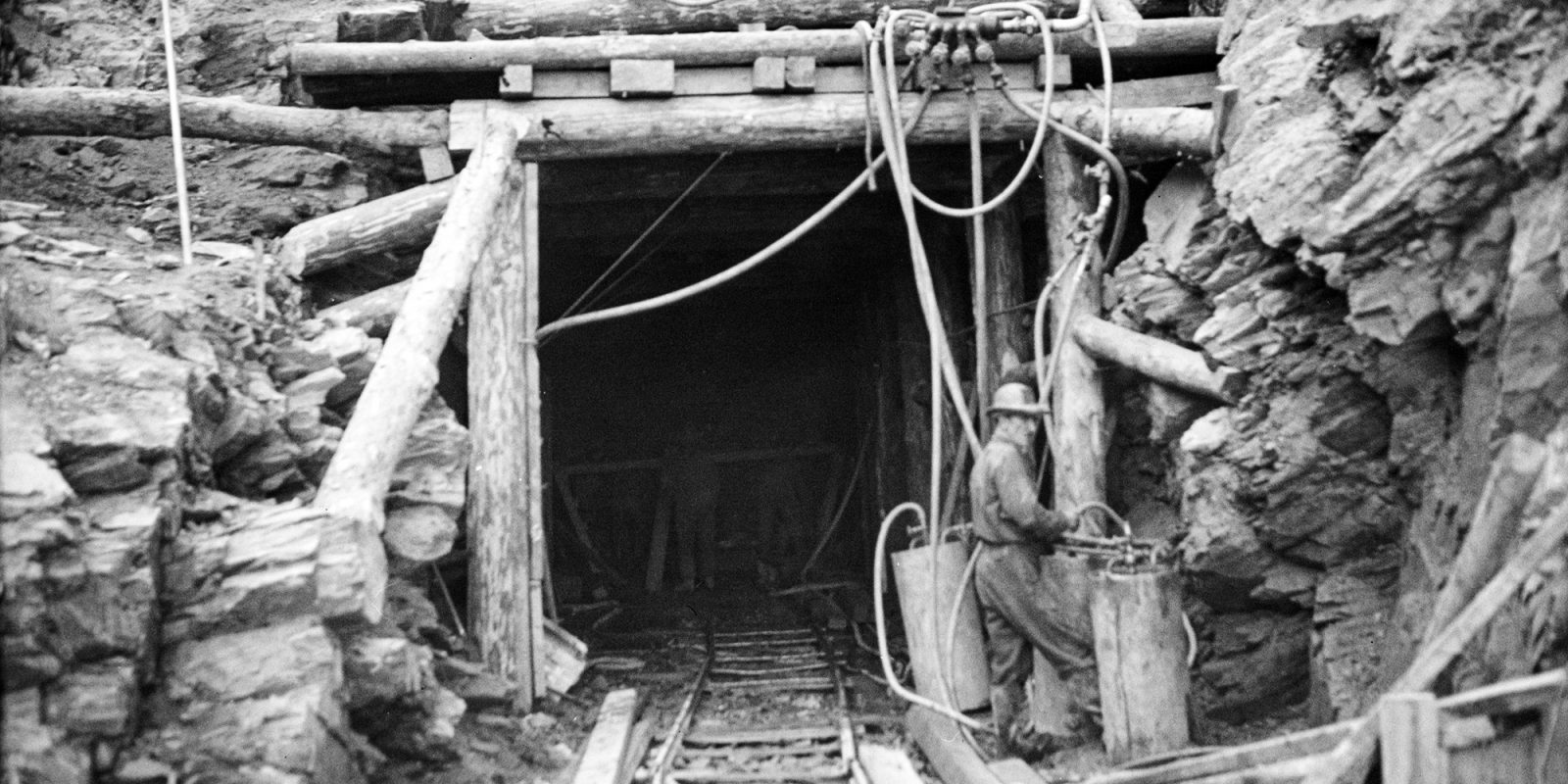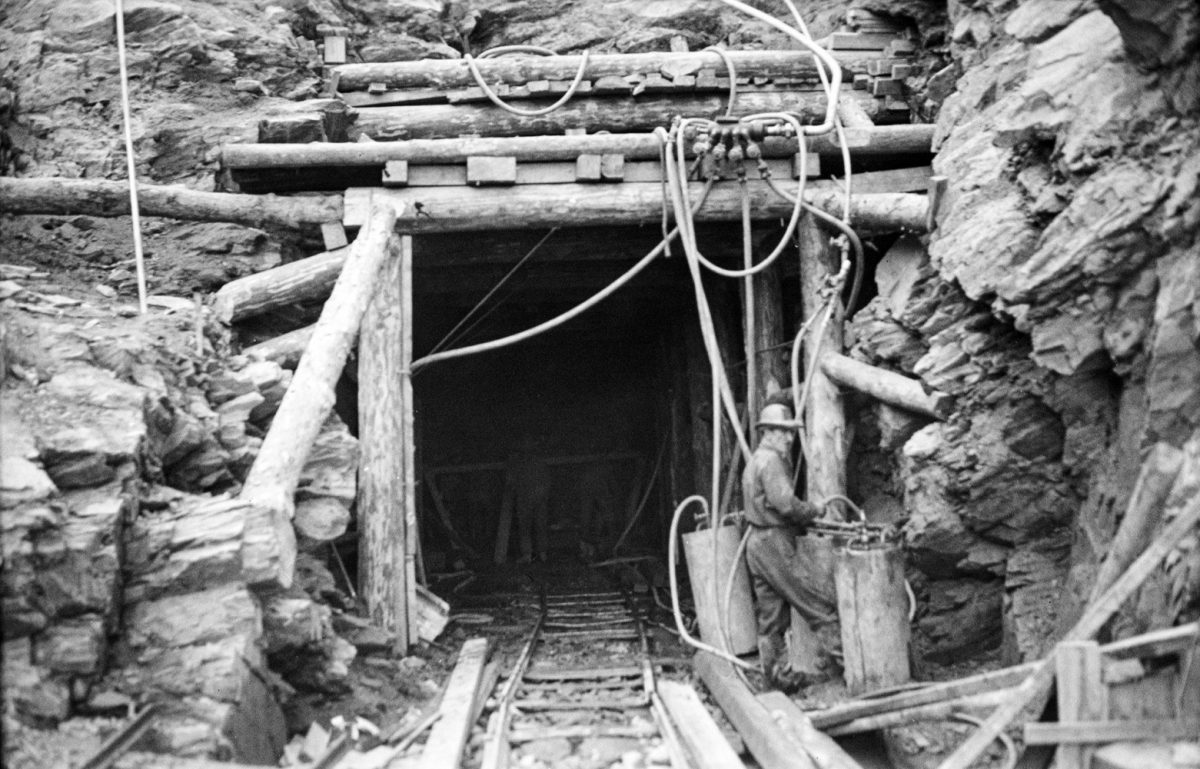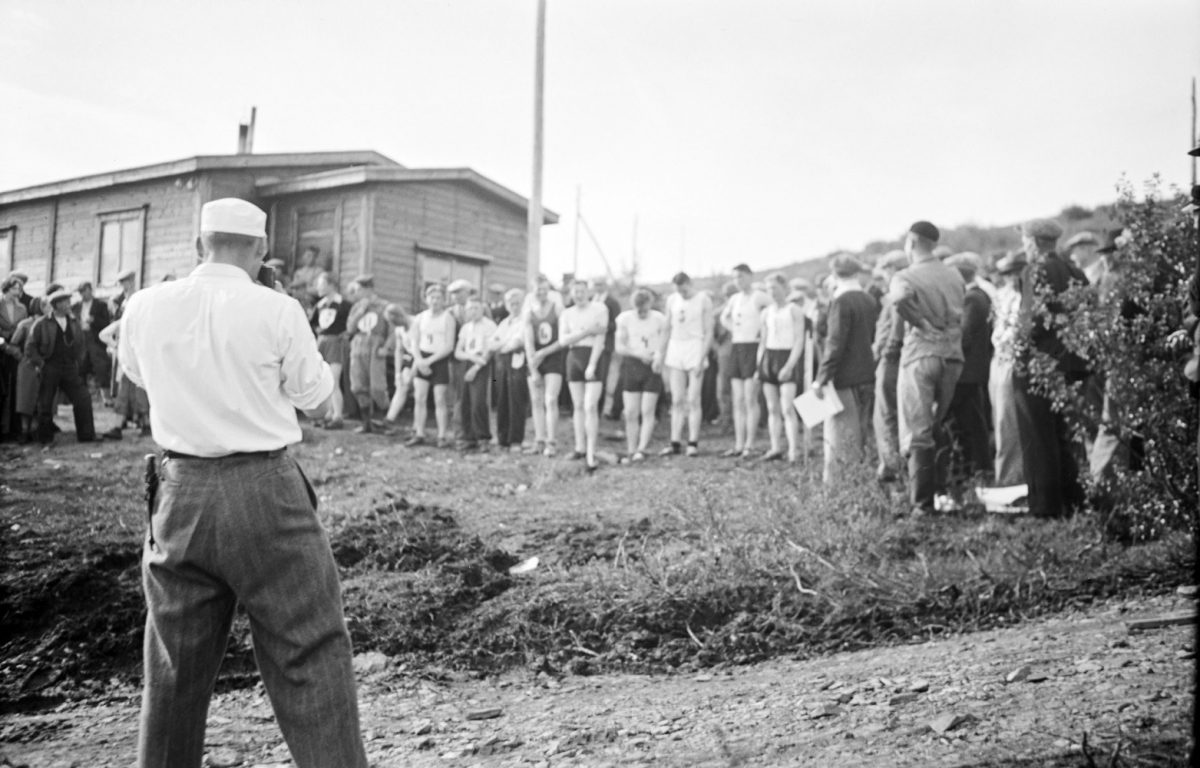
Meeting with miners
Petsamon Nikkeli’s mine and Kolosjoki’s mining community were captured on film by Niilo Tuura.
In late winter 1938, a specialist reporter from the magazine Kuva, published by Yhtyneet Kuvalehdet, visited the mining area of Petsamon Nikkeli and a fledgling mining community in Kolosjoki. His word choices indicate how impressed the journalist was by what he saw there. He described the worksite in the mountains, lit by large-scale floodlights, the long mining tunnels, the big drills, the narrow-gauge railway, and the roads that were kept in immaculate condition throughout the year as simply amazing.
He also wrote about the clubhouse built for the mining company officials, complete with a central heating system, water closets and other comforts. There were some big plans for the mining community. The intention was that once the local detailed plan for Kolosjoki’s housing blocks had been approved, the area would also receive a hospital, a school and a cinema to attract entire families to the region. The idea was that workmen with families would bring calmness and stability to the mining community.
Engineer Niilo Tuura from the mining company showed the reporter around the worksite. In addition to his other duties, he recorded the developments in the mining area with a camera. Tuura’s photographs were used, for example, when reporting on the progress made at the site to the Canadian owner of the mining rights in Kolosjoki, INCO (International Nickel Company), which was the parent company of Petsamon Nikkeli. Tuura photographed the mining area’s technical details and general scenery, but also the mining community’s everyday life and celebrations, the area’s functionalist residential buildings and the surrounding region of Petsamo.
Work in Kolosjoki took place six days a week, but the workers also had some time off. The nickel town had both a male and a female choir, an orchestra and an amateur theatre, but the most popular pastime was sports in different forms. A running competition that had started from a bet between the men became an annual tradition, and the competitors had to run to the top of the nearby Säräslaki fell and back. There was no marked path, and instead the runners could pick any route that they deemed to be the fastest. The aim was to complete the race in less than an hour, and the winner of the 1938 competition, Soini Ovaska, arrived at the finish line in under 44 minutes.
The war that began in 1939 changed the future prospects of Kolosjoki’s mining area. It caused disruptions to the work and a shortage of labour, as the men were needed on the front. Despite this, Petsamon Nikkeli continued to operate until the end of the war in autumn 1944, at which point the story of Kolosjoki’s Finnish mining community came to an end as Petsamo became part of the Soviet Union.
More photographs from Kolosjoki taken by Tuura in 1937–1938 are available at the Picture Collections of the Finnish Heritage Agency: https://museovirasto.finna.fi.
Text: Saija Kainulainen
Kamera 8/2022

Tunnelling in Kolosjoki has begun, 1937. Photo: Niilo Tuura / Niilo Tuura’s collection / Finnish Heritage Agency (HK19900114:545)

The 1938 Säräslaki running competition participants ready to go. Photo: Niilo Tuura / Niilo Tuura’s collection / Finnish Heritage Agency (HK19900114:1050)